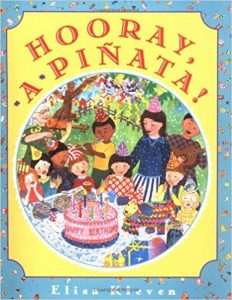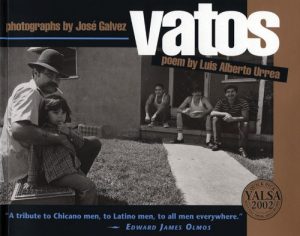 One evening, Pulitzer Prize-winning photographer Jos Galvez heard Luis Alberto Urrea read “Hymn to Vatos Who Will Never Be in a Poem” with its chant-like repetitions and its evocation of Chicano manhood. As Luis read each line, an image clicked in Jos’s memory, and he knew that he had already taken that photograph. The result of that experience is this remarkable book. Vatos is street slang for dude, guy, pal, brother. It sprang from the highly stylized language of the Pachucos (los chukotes) in the ’50s. It’s a Chicano term derived from the once-common friendly insult chivato, or goat. It had a slightly unacceptable air to it, which the Locos and Weesas of the Chuco world enjoyed. They were able to take the sting out of racism by calling themselves a bunch of names assimilated “good Mexicans” didn’t like.
One evening, Pulitzer Prize-winning photographer Jos Galvez heard Luis Alberto Urrea read “Hymn to Vatos Who Will Never Be in a Poem” with its chant-like repetitions and its evocation of Chicano manhood. As Luis read each line, an image clicked in Jos’s memory, and he knew that he had already taken that photograph. The result of that experience is this remarkable book. Vatos is street slang for dude, guy, pal, brother. It sprang from the highly stylized language of the Pachucos (los chukotes) in the ’50s. It’s a Chicano term derived from the once-common friendly insult chivato, or goat. It had a slightly unacceptable air to it, which the Locos and Weesas of the Chuco world enjoyed. They were able to take the sting out of racism by calling themselves a bunch of names assimilated “good Mexicans” didn’t like.
Hispanic Americans
A Piece Of My Heart/Pedacito De Mi Corazon: The Art Of Carmen Lomas Garza
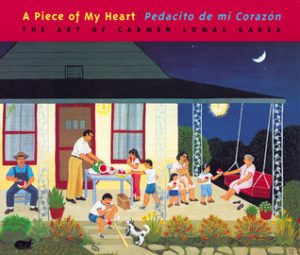 The thirty-seven works of art, twenty-four in full color, presented in A Piece of My Heart take us into the heart of one of the most distinguished painters of Chicano life. In a career that spans twenty years, Carmen Lomas Garza has depicted the cherished traditions and harsh struggles of Chicano culture. From Grandparents Cutting Cactus to Felino’s Breakdancers, Lomas Garza’s bright, colorful images capture the beauty and texture of daily life among families, friends, and neighbors in southern Texas.
The thirty-seven works of art, twenty-four in full color, presented in A Piece of My Heart take us into the heart of one of the most distinguished painters of Chicano life. In a career that spans twenty years, Carmen Lomas Garza has depicted the cherished traditions and harsh struggles of Chicano culture. From Grandparents Cutting Cactus to Felino’s Breakdancers, Lomas Garza’s bright, colorful images capture the beauty and texture of daily life among families, friends, and neighbors in southern Texas.
Hooray, A Pinata!
Harvesting Hope: The Story of Cesar Chavez
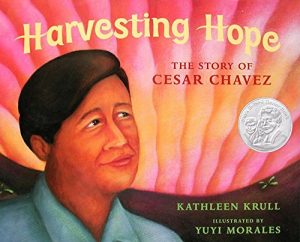 Cesar Chavez is known as one of America’s greatest civil rights leaders. When he led a 340-mile peaceful protest march through California, he ignited a cause and improved the lives of thousands of migrant farmworkers. But Cesar wasn’t always a leader. As a boy, he was shy and teased at school. His family slaved in the fields for barely enough money to survive.
Cesar Chavez is known as one of America’s greatest civil rights leaders. When he led a 340-mile peaceful protest march through California, he ignited a cause and improved the lives of thousands of migrant farmworkers. But Cesar wasn’t always a leader. As a boy, he was shy and teased at school. His family slaved in the fields for barely enough money to survive.
Cesar knew things had to change, and he thought that–maybe–he could help change them. So he took charge. He spoke up. And an entire country listened.
An author’s note provides historical context for the story of Cesar Chavez’s life.
Isabel’s Texas Two-Step (Beacon Street Girls)
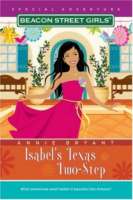
Isabel’s sister Elena Maria is turning fifteen, and the Martinez family is planning her quinceañera — at Uncle Hector’s ranch in San Antonio!
Chato And The Party Animals
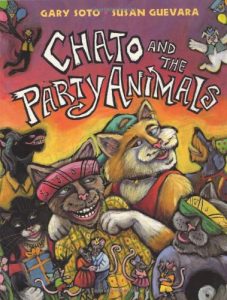 Chato, the coolest cat in el barrio, loves to party–but not his best buddy, Novio Boy. Birthday parties always make him blue. “I’m from the pound,” he tells Chato. “I don’t know when I was born. I never knew my mami. I never even had a birthday party, or nothing.”So Chato plans the coolest surprise party for Novio Boy, inviting all of el barrio, and cooking up a storm. But he forgets the most important thing–inviting Novio Boy! Luckily, just as everyone starts remembering all the things they used to love about their long-lost friend, the birthday boy arrives with his own surprise–himself!In a starred review, Publishers Weekly called Chato’s Kitchen “Wickedly funny…Guevara’s cats are delicious send-ups of barrio characters, and Soto’s words glisten with wit. Salud to this magical pairing of talents.”
Chato, the coolest cat in el barrio, loves to party–but not his best buddy, Novio Boy. Birthday parties always make him blue. “I’m from the pound,” he tells Chato. “I don’t know when I was born. I never knew my mami. I never even had a birthday party, or nothing.”So Chato plans the coolest surprise party for Novio Boy, inviting all of el barrio, and cooking up a storm. But he forgets the most important thing–inviting Novio Boy! Luckily, just as everyone starts remembering all the things they used to love about their long-lost friend, the birthday boy arrives with his own surprise–himself!In a starred review, Publishers Weekly called Chato’s Kitchen “Wickedly funny…Guevara’s cats are delicious send-ups of barrio characters, and Soto’s words glisten with wit. Salud to this magical pairing of talents.”
Free Baseball
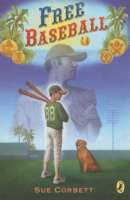
Felix knows his dad was a famous baseball player in Cuba—and that his father risked everything to send Felix to America. But his mom won’t reveal anything else. When a baseball team with Cuban players comes to town, Felix wonders if they knew his dad and sneaks into their locker room to ask. That’s when the players mistake him for their new batboy. Determined to uncover the truth about his mysterious father, Felix plays along, going as far as running away from home to become the team’s batboy. His bittersweet adventure glows with the friendship of a miraculous dog, the warmth of a mother’s love, and the magic of baseball.
Windows into My World: Latino Youth Write Their Lives
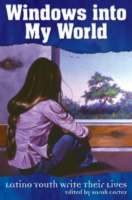
“They never thought I would leave. I remember tia Olivia calling the house to let me know that I was betraying my family by leaving to study. But unlike both of my parents, I wasn’t leaving the country to let years pass before seeing my family again; and unlike my mother, I wasn’t leaving to get married.” In this short but powerful memoir, Marisol explains that she knew her departure for Yale would create conflict with her family, but she is surprised that her leaving leads to a bond with her parents that she could never have imagined. Marisol is one of thirty-six Latinos whose writings are included in this collection. They all uniquely document their struggles with the issues that young people encounter–friendship, death, anorexia, divorce, sexuality–but added to these difficulties are those specific to their ethnicity, such as adjusting to a new culture and language, and handling familial and cultural expectations that can limit their hopes and dreams but just as often enrich their lives. In one piece, a young woman muses about the safety in the hills of her native Honduras compared to the flat expanse of her new homeland: “When I venture back into these silver hills, no one can see where I’ve gone because of the curves of the winding streets. But when I walk the flat roads of America, people can watch me go, trace my path and witness the inevitable stumble.” These short essays written by young men and women from various Latino backgrounds–Mexican American, Puerto Rican, Dominican, Salvadoran–reflect the diversity of growing up Latino in the United States. Whether from a gay or straight, urban or rural, recent immigrant or third generation perspective, these illuminating pieces of memoir shine a light into the lives of young Hispanic adults.
Chicken Foot Farm
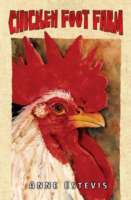
On the eve of World War II, young Alejandro comes of age on his family’s South Texas farm, known as Chicken Foot Farm because of how his mother marks her chicks. “Mama held the chick against her breast and splayed its left foot between her thumb and index finger. With her free hand she… quickly cut off the end of the chick’s shortest toe.” Rich with the customs and traditions of rural, Mexican-American life, Chicken Foot Farm depicts a multi-generational family in flux as change crawls relentlessly toward their land and lifestyle. As the seasons–and loved ones–come and go and misfortunes befall the family, Alejandro learns the lessons of life: the importance of family, honesty, hard work, and compassion. When the kitchen burns down one night, Alejandro feels they have lost something integral to their family unity. But his father promises they will build another kitchen, the new one better than the old. As Abuela Luciana ages, she begins to behave erratically, burning tortillas, forgetting to add water to the beans she is cooking, and even disappearing from the farm. She is certain someone has cursed her–put mal de ojo on her. How can the family cure her when she is the curandera, the one who has always taken care of them? Most importantly, Alejandro works hard to win his father’s approval, even though Papa generally ignores him in favor of the eldest son, Ernesto, who Papa says will inherit the farm. When Ernesto joins the Army, the family must face the possibility that he may not return as the entire country is thrown into the uncertainty of war. Following the attack on Pearl Harbor, young Alejandro notices something new in his family’s kitchen: a framed United States flag now hangs on the wall. “It’s something I can do for the war,” his Abuela Luciana tells him. Not understanding, she explains to him, “I can remind people that we are Americans.” In these poignant images of a time and place long gone, Anne Estevis sketches a tight-knit, Mexican-American community on the cusp of a new way of life as tractors replace mules and modern science competes with superstitious beliefs.
We Won’t Back Down: Severita Lara’s Rise From Student Leader To Mayor (Hispanic Civil Rights)
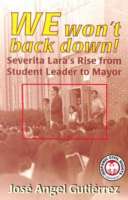
An enlightening biography for young adults of a little-known female activist in the Hispanic Civil Rights Movement On December 9, 1969, change was in the air. The small town of Crystal City, Texas would never be the same. After weeks of petitioning for a hearing with the Crystal City school board, students of Crystal City High and their parents descended on the superintendent’s office. The students had been threatened with suspension and even physical violence. Powerful members of the community had insisted they would fire the parents of students if they went in front of the school board, and still, they came. Finally, the school board removed the chairs in the gallery, and the parents and students stood until members of the school board fled to avoid the confrontation. As the students and their parents stood in front of the building, a cry rose from the crowd. “Walk out. Walk out.” So began the Crystal City High student walk out. At the center of the fervor was Severita Lara. Called la cabezuda, or stubborn girl, by her mother, Lara bore the mark of a leader from an early age. She was not afraid to stand up to anyone: girls or boys, teachers or superintendents. She always followed her father’s advice, “If you know it’s right, do it.” José Angel Gutiérrez, the famous civil rights leader, chronicle’s Lara’s ascent from a willful child to the mayor of Crystal City. From her father’s doting support to her mother’s steel-rod discipline, Gutiérrez offers a detailed portrait of the early family life of the woman whose continuing struggle against segregation and discrimination began while she was still a high school student in Crystal City. He also follows her attempts as a single mother to achieve her dream of being a doctor and providing for her sons. This is the story of la cabezuda, Severita Lara, who has made an indelible imprint on American history.

